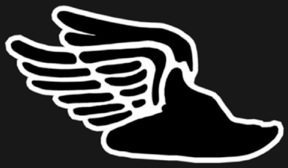Running from the heart is not that simple. To enjoy a long and injury free running career, we need to take into consideration multiple factors that can affect our runs. Posture or body alignment, training programs and even proper gear. One basic information we must know individually is our foot strike type. It is classified according to where our foot contacts the ground when we run. We are divided into Forefoot Strike, Midfoot strike and heelstrike runners.
The foot is divided into 3 parts. The Forefoot is primarily occupied by the toes. The Hindfoot or Heel is the area that connects our legs to the foot. In between the heel and the forefoot is the Midfoot.
(HeelStrike Running)
Runners are often not aware of their foot strike type. Most conclude that because walking involves striking with the heel and moving forward to the toes that running is the same only faster. This is not true. Fast runners are forefoot strikers. Runners like Simon Losiaboi use their forefoot to run fast and long. We are not that lucky. Our foot is not as conditioned as Simon's to sustain forefoot running. Most runners use their heel. Heelstriking is the most obvious way of running since this pattern is used when walking. Fast walking is running, right? WRONG. Increasing your pace when walking is not the same as running.
(Forefoot / Midfoot Running)
Current research in sports medicine have focused on determining the cause of leg injuries in running. Since most athletes run to improve endurance, researches are aimed at determining the cause of injuries and finding ways to prevent them. One study in particular claimed that runners who use the heelstrike are more prone to developing injuries than runners who use their forefoot. Striking with the heel causes the force from the impact transmit to the knee and hip causing pain. This is not true with forefoot and midfoot running. When the foot contacts the ground the shear force is reduced by the natural suspension provided by your plantar fascia and in turn help to propel the foot forward. The midfoot / forefoot strike will decrease the strain on your knees and hips and reduce pain when running.

Determining your foot strike type will also help you choose the right shoe. Most shoes, like the Asics Kayano and Kinsei, are designed for heelstriking. They are designed with higher heels to accomodate the gels which function to cushion your heel on impact. Nike and Newton, on the other hand, are developing shoes that promote the Barefoot running principle and focus on forefoot / midfoot running. They claim that the most efficient way to run is to run barefoot. Since natural running uses the midfoot or forefoot strike, cushioning for these shoes are situated at the midfoot area to soften the foot impact.
Before you buy your next pair of running shoes, determine the following:
1. Foot Length (US/UK)
2. Foot width (D/E)
3. Foot Arch (Low/Normal/High)
4. Foot Pronator type (Overpronator/Neutral/Underpronator)
5. Foot Strike type (Heelstrike/Midfoot or Forefoot Strike)
Ask for shoes that appropriately match your foot to ensure an injury free and efficient run. Good Luck.








































































